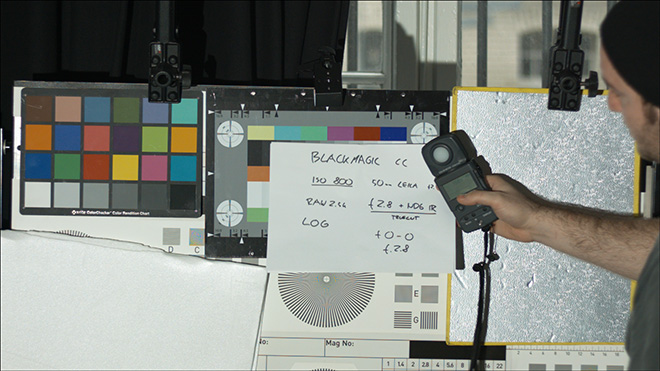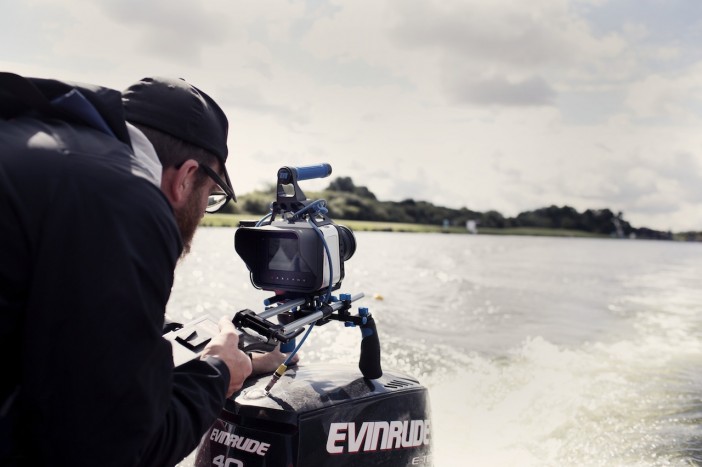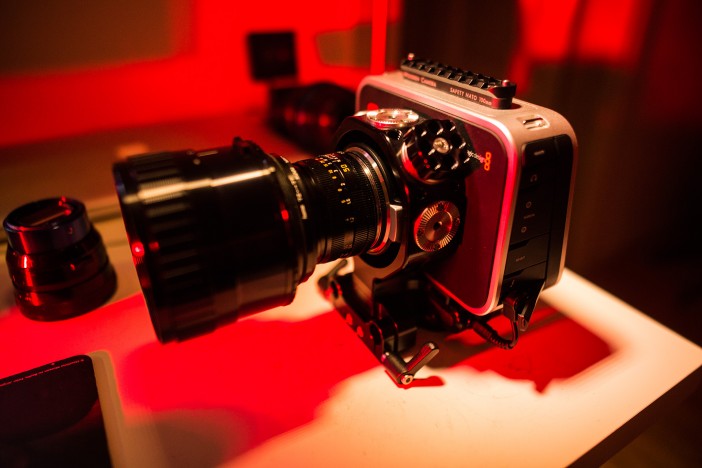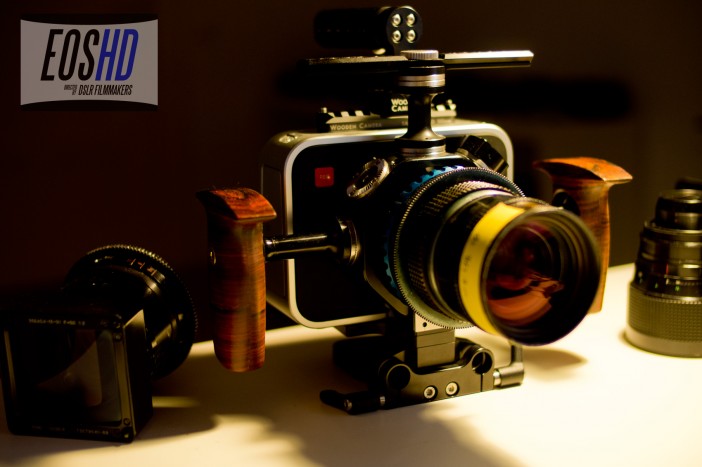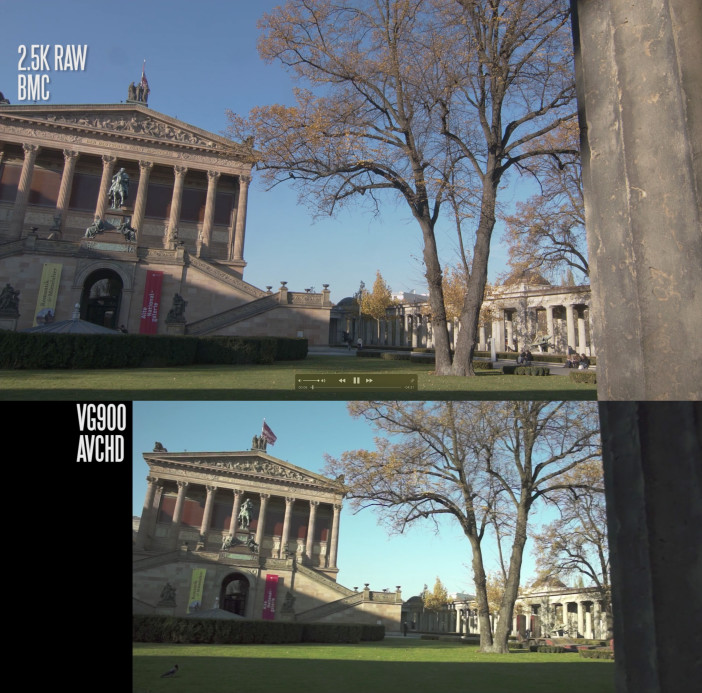Here’s Rodney Charters (DoP, 24) musing on his use of the Blackmagic Pocket Cinema Camera as a POV B-camera to the Alexa.
(The Pocket has also recently been used separately on Warner Bros motion picture American Sniper).
Meanwhile the new Blackmagic URSA Mini 4.6K has begun to find its way into the hands of DPs with beta firmware. Daniel Peters is the latest to shoot a mini-project with it which you can see below along with my opinion of where Blackmagic is going with the new camera.
Blackmagic URSA Mini 4.6K footage by Daniel Peters
[vimeo]https://vimeo.com/151363154[/vimeo]Blackmagic’s cameras – an EOSHD opinion
Although I’m most curious about the ergonomics and workflow of the URSA Mini, the new 4.6K sensor also looks interesting.
For the first time it is a custom spec chip especially for cinematic acquisition. It’s not an off-the-shelf scientific CMOS sensor like the others. I also think the URSA Mini’s smaller body seems like another very necessary and positive step.
I can’t speak for all the positives of this camera yet as I’ve not shot with it. I can however share some opinions on where I think Blackmagic are heading.
I think the new camera is primed to take a share of the lower-end of RED’s business. One sticking point is that the compressed raw options available from RED are far more advanced, as seen on the Raven and Scarlet. When you are recording raw at high frame rates or at 4K or higher resolutions, Cinema DNG’s more basic compression doesn’t really cut the mustard. It is going to get pretty gnarly for file sizes pretty quickly. Internal ProRes I think is how 99% of URSA Mini 4.6K users will use for paid work, whilst 99% of RED users will be happily shooting raw. I think that will be the main difference between the two camps in 2016. As for Sony’s FS5 and FS7 – these are more video cameras than cinema cameras I think. The videography market will embrace those but I’m not sure they appeal to the kind of market who shoot RED or Blackmagic.
I can’t help feeling the appeal of the earlier Blackmagic cameras were broader. They seem to have shifted away from the philosophy of the earlier cameras like the Pocket – almost like an artistic cinema camera in a consumer camera format with price to match. I’d love to see an update to the Pocket Cinema Camera from them at NAB this year and a 2.5k or 2.8k cinema camera for under $2k. For me the Micro cameras are not really the same concept as before. The balance is all wrong once you add a cage and monitor to such a small camera-head.
The URSA Mini 4.6K looks to be a bit bigger and double the weight of my Sony FS5. Still, for most people the ergonomics seem a significant step forward from the URSA Major-ly massive and BMCC. Again for the low-end of the RED market who are used to the weight, big rigs and big chunky V-lock batteries nobody will complain that the URSA doesn’t use the small camcorder batteries of a C300 II or Sony FS5 but I love how small and convenient those batteries are by comparison. They really help keep the weight and size down to a minimum or one-man shoots like Daniels’ above. The Blackmagic cameras currently push a LOT of data around and have quite hot running sensors which require power-hungry cooling, I would like to see the power consumption come right down on their future cameras.
Meanwhile an E-mount version of the URSA Mini would be a VERY welcome third option alongside the EF and PL versions; we could go ‘full frame’ with a Speed Booster and use a wider range of lenses. If Canon allow the use of the EF mount on competing cameras to Cinema EOS, surely Sony can consider this too.
4K – enough is enough – Rodney Charters
Above is an absolute gem of an interview with Rodney courtesy of Rick Young.
As a long time Arri shooter, Charters spells out the current thinking among many DPs with regards to where digital is going, in particular Ultra Ultra Ultra Ridiculous HD.
“If you’re shooting faces, we would be using diffusion to take [sharpness] back down. The moment I put that filter on, where does the 4K go? Nowhere, it’s gone”
“I have a great desire to say… ‘4K – do we really need it?’ It boils down to some cameras having a particular look.”
Also an illuminating thought from Charters is that he doesn’t want to show clients a file which needs a ton of post production work to look their best. He wants the look immediately straight out of the box.
I think Sony are starting to see the consequences of S-LOG out there in the open… Fact is it looks terrible straight off the card and is an absolute pain to get right in post. The result is that in the vast majority of cases, even the final look of the footage feels ‘off’. Sony are beginning to risk getting a reputation for weird looking images, even though the cameras are capable of superb performance in the right hands.
Try this for an experiment… Pick an actor of an older age, do a few tests with 4K S-LOG on the FS7 and Magic Lantern 2K raw on the 5D Mark III. The difference is quite remarkable in the softer rendering of the 5D and the way colour comes out BANG ON straight away, perfect skin tones, flattering rendering, far less clinically revealing of every wrinkle or imperfection. 14bit raw is so kind to old folk!! To get the FS5 or FS7 this way in post requires considerable time, effort and expertise – is it worth it?
“I want to give them what I feel it should be right out of the camera”, says Charters.
“I’m just unsure how far we can go with 6K, 8K that people are pushing”
And I can’t help but agree which is why in 2016 I am going to speak a bit more fondly of plain old 2K in a camera if it gives something unique with the overall look and character (but only if it’s practical to use / ergonomic).
I’m concerned that Canon, Sony and indeed maybe RED’s whole sales pitch from here on is that “the more K the better”, and it risks really coming off the rails for sales. With film seemingly making a big come back as well, more and more top flight filmmakers are going for character over the latest digital ‘more is more’ approach.
“Sony’s colour space is not satisfying in the way the Alexa is” – Charters
In the interview, Rodney says that because Sony are a video company, their progress into the cinema world with the CineAlta range is a little compromised. Sony have a great depth of expertise in broadcast, TV and video acquisition. Cinematically however their colour is definitely the worst of the bunch. Arri, Red, Blackmagic and Canon all do it much better. If you need proof, just browse through the Rec.709 profiles on the Sony FS5 and FS7. They don’t look as bad as Sony’s first foray into large CMOS camcorders (think NEX-VG900) but they still have absolutely terrible rendering of warm tones and artificial lighting, making the white balance look as though its broken.
Again this needs S-LOG and a lot of work in post to put right. You can’t ‘just shoot’ and deliver, with the same kind of cinematic charm to colour that the Canon or Blackmagic cameras in the same price range have.
That’s why I am dying to check out the URSA Mini 4.6K and see how it compares to my Sony FS5 and 1D C. It could well be on my radar as a camera to buy if I keep having issues with my FS5.




